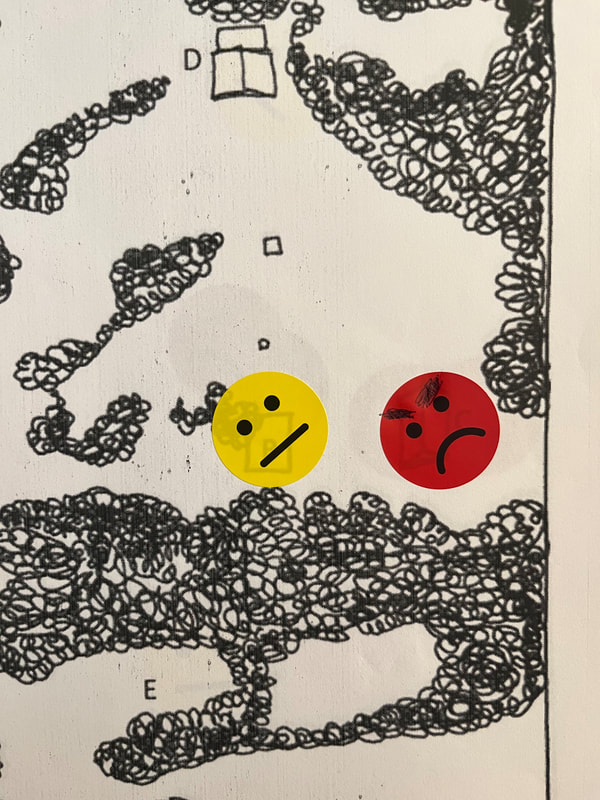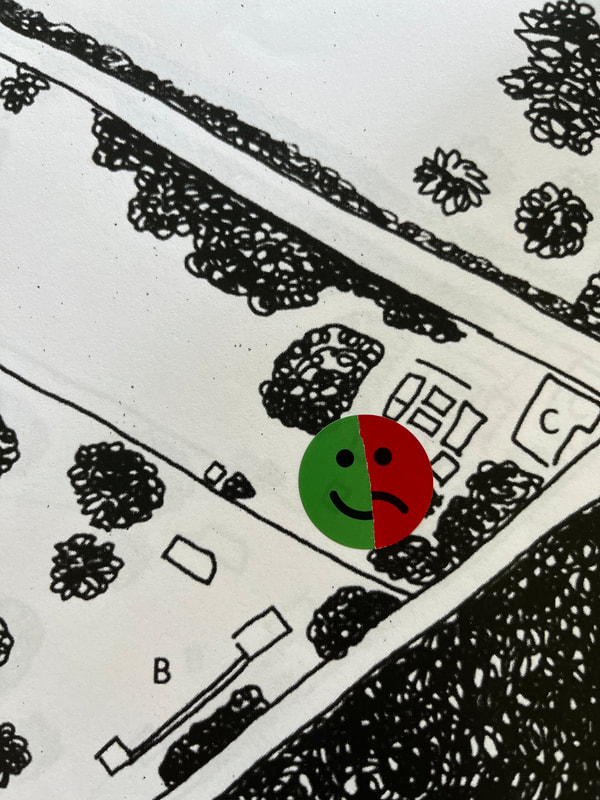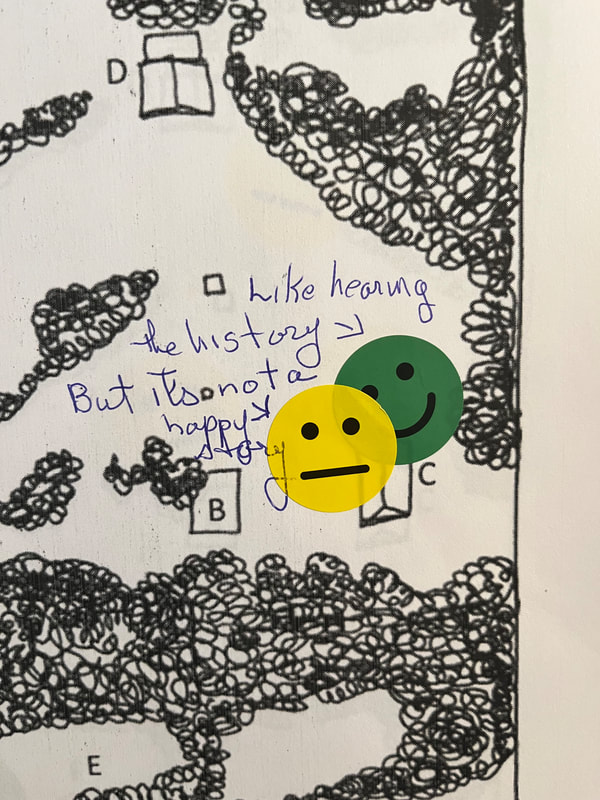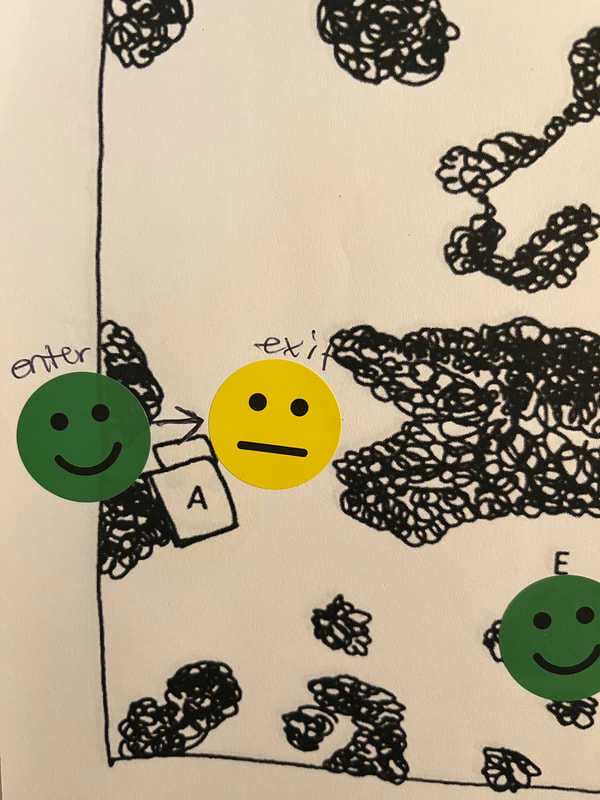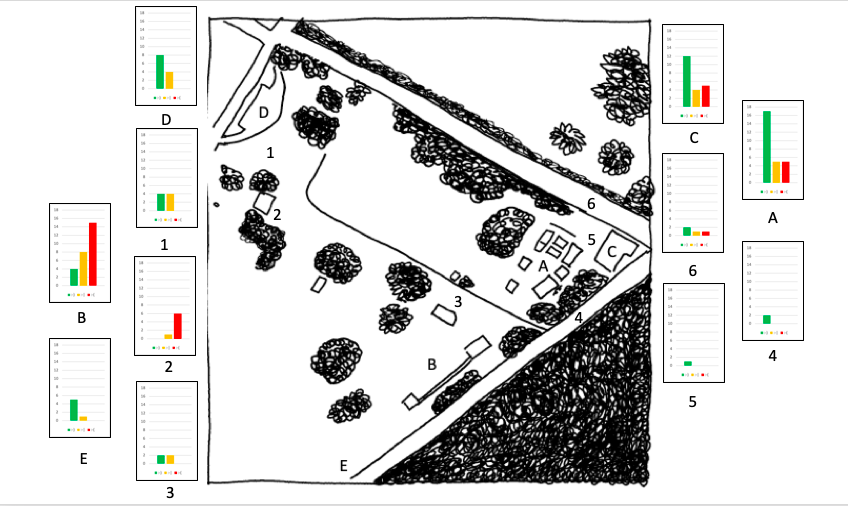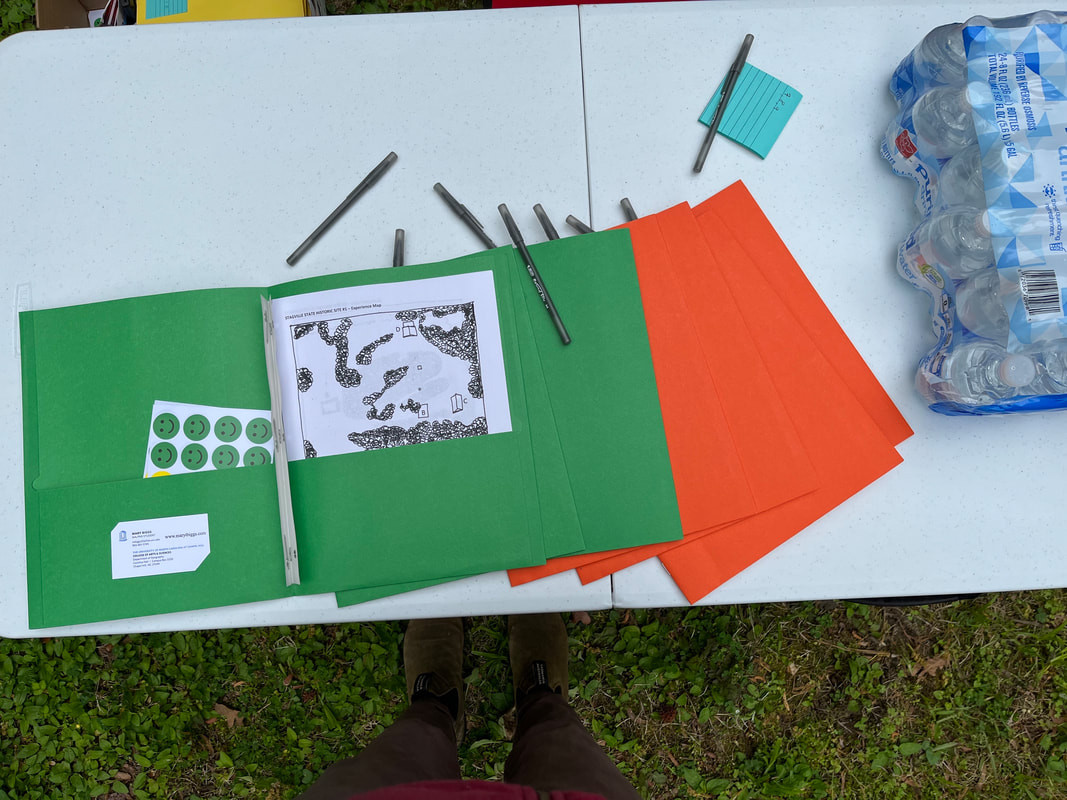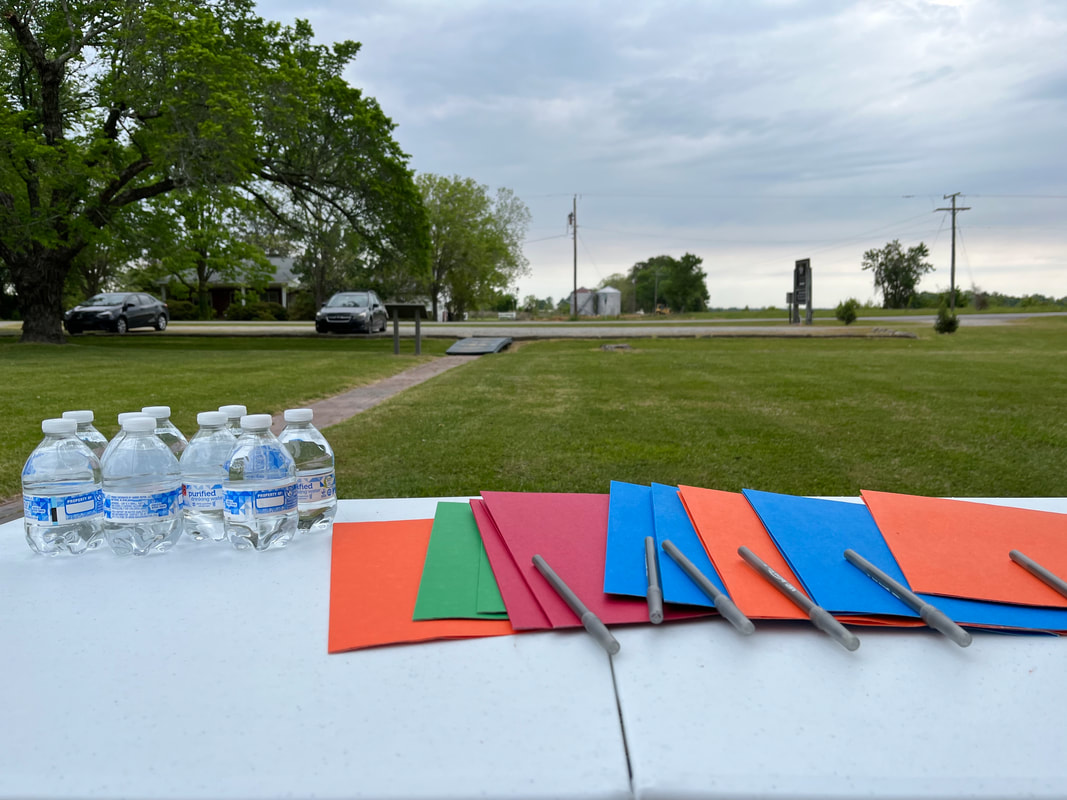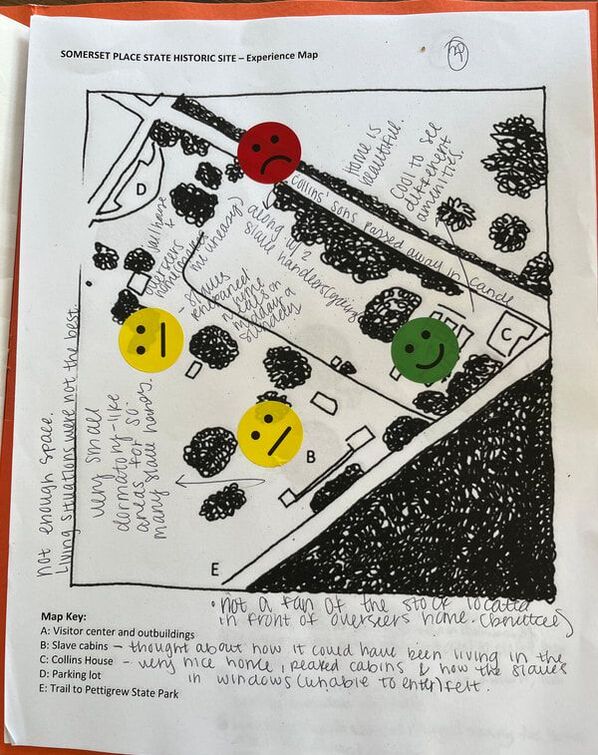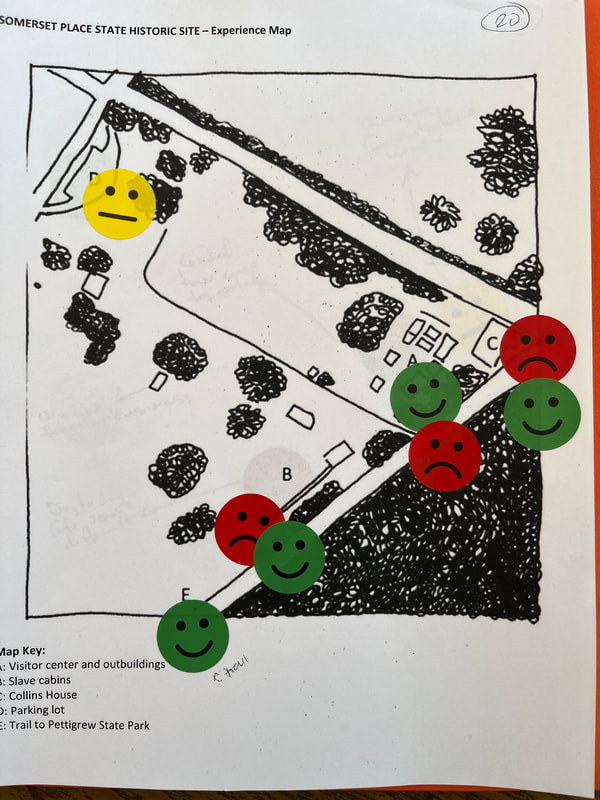|
Creative methods for visitor surveys • Visitor/user engagement • Social science data collection I only provided three kinds of stickers for visitors to use on their maps: green/smiling, yellow/neutral, and red/frowning. But emotions are complex and messy! So what did my participants do? They drew angry eyebrows on the red frowning faces (above, left) to more fully express the anger they felt at the ongoing legacies of enslavement. They ripped stickers in half and created a self-described "Christmas response" (above, right) to visually encapsulate the mixed feelings they had when learning about horrible things (red) in a beautiful place (green). Others used the pens I also gave them to write comments and articulate relationships between stickers that represented their own emotional engagement with the space. Above, right, you can see that this visitor was happy and smiling when entering the visitor center (A) but after hearing about the realities and legacies of slavery from the tour guide, left feeling more conflicted.
Overall, the simplicity and tactility of this unique data collection tool allowed the visitors themselves to take ownership of their own products and push my research in ways I never anticipated!
0 Comments
Qualitative data analysis • 1:1 interview and creative survey compilation I'm analyzing the data I collected this summer in a few different ways, but one of my favorites is combining all of the sticker responses onto a single map per site. Here, you can see how emotions shifted as people moved through Somerset Place State Historic Site, below. Using interview data from the visitor conversations, I can also identify what the green, yellow, and red stickers meant for different people around the site. This clears up ambiguity and gives site staff a glimpse into the minds of their visitors. For example, Location B on the map above is the reconstructed houses where dozens of people enslaved on this plantation were forced to live. The small number of green smiling faces in the corresponding graph (far left) does not indicate that a small number of visitors were happy that people were enslaved. Rather, it indicates that a number of people were very happy to see that the stories of enslaved people were being preserved and told at Somerset Place, which prides itself on teaching the full history of all the former plantation's inhabitants.
Creative methods for visitor surveys • Visitor/user engagement • Social science data collection This summer, I asked visitors to map their responses and experiences at 3 different NC state historic sites. I gave them maps, pens, and brightly-colored emotion stickers and told them to go wild -- no wrong answers! Before they left, I or one of my fantastic research assistants spoke with each of them for about 5 minutes, asking what the different stickers meant and what their experience was like overall. Because the stickers themselves were ambiguous, these interviews allowed us further insight into what visitors were thinking and feeling. The result? 122 maps covered in stickers, alongside 122 visitor interviews that include topics from personal relationships to the site, to childhood memories of field trips, to what they learned from the visitor center museums and what other questions they had. 122 records of people seeing, feeling, and experiencing NC history = value for site staff AND for my dissertation! Above: A look inside one of the folders, ready for a visitor at Stagville State Historic Site, March 2022 Below: Multiple bright folders spread out on a table by the parking lot at Somerset Place, May 2022 Above: Two finished maps from Somerset Place, showing a combination of written thoughts and stickers (left) and a layered/mixed response (right).
|
Notes from the FieldThoughts, pics, and maps from my ongoing social science research AuthorI'm a qualitative and quantitative social scientist working on my geography PhD and collaborating with public plantation museums across North Carolina to examine visitor responses, staff goals, and relationships between landscape and histories of enslavement. Archives |
